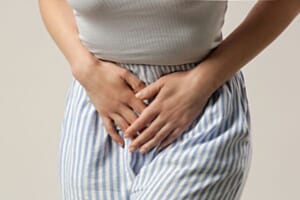The increase in exercise, foreign travel and outdoor activities that summer brings might be great for your general health - but can spell trouble for your skin.
5 July, 2007
Here are some of the most common summer skin ailments, and how best to prevent and relieve them.
Bug Bites
Bites from mosquitoes and other flying insects can cause pain, itching and swelling
Prevention - To minimize bites, wear long-sleeved shirts and long trousers when in bug-ridden areas. Try and stay inside at dawn and dusk when mosquitoes are most active. Use mosquito netting on baby strollers and playpens that are outdoors. Get rid of standing water around your home, such as in old tires, where mosquitoes can hatch.
You should also use insect repellents. Diethyltoluamide, or DEET, is the most effective substance against a wide variety of insects. A DEET concentration under 10% is best for children, while 10% to 30% is recommended for adults for "backyard" activities. For wilderness trips, a 40% to 50% concentration will repel bugs longer. DEET concentrations above 50% repel bugs only marginally longer and may pose a higher risk of side effects like skin irritation.
Relief - If you do get bitten, applying ice for 10 to 15 minutes helps to relieve the pain and itching, as does calamine lotion.
Sun Damage
Sun exposure damages skin inside and out. First it attacks the epidermis, the thin, outermost tier of skin, forming a layer of dead cells that give skin a leathery appearance. Then it progressively damages the upper layers of the dermis, or the bulk of the skin, leaving them thinner, less resilient and more susceptible to wrinkling. Over time, the collagen and elastin fibers that form the dermis also break down, causing gradual drooping and sagging.
Prevention – Apart from just grabbing some sunblock, a straw hat and oversized shades - thinking about what nutrients you are supplying your body with will also protect you against the ageing effects of the sun this summer.
Solar radiation causes excessive oxidative stress in the skin, leading to irritation, sunburn and ageing. So what nutrients should we adding to our diets in the run up to the summer to ensure we are doing as much as possible to photo-protect our skin?
A new daily supplement called Evelle contains 7 sun protection nutrients that will get your skin prepared for the summer. Clinical studies have proven that Evelle fundamentally alters the skin’s underlying structure from within and also increases the skins own adaptive protection to the sun by increasing enzymes which allow skin to cope with the higher free radical burden that exposure to sunlight causes.
A group of researchers at the Skin Investigation and Technology Institute (SIT) in Hamburg, Germany, tested the product on 62 women aged 45-73 years. After three months, the researchers observed that those women who had been taking Evelle tablets obtained a significant reduction in skin wrinkling and roughness, compared with those women who had been taking identical placebo tablets. Evelle is available from pharmacies and health food shops. A month’s supply costs £34.45.
Relief – If you do get sunburnt, it is crucial to reduce the inflammation as soon as possible. The best way to do this is to hold a cold wet towel to the affected area, or even ice cubes wrapped in a towel of cloth. If a large part of your body is burnt try getting into as cold a bath as you can bear and lying there for as long as possible. Then apply after sun lotion once an hour until the heat and redness have gone down. After that, regularly apply an anti-oxidant moisturizer three times a day and keep out of the sun.
Cold Sores
Cold sore out breaks are more likely to happen on holiday as the UV rays from the sun is a trigger for them. Add to that the stress of the flights and a few late nights and it’s a perfect environment for a cold sore attack.
Most over the counter treatments take a minimum of a week to clear up the blisters, which means you won’t want to show your face for the majority of your holiday.
Prevention & Relief
New Liquorice & Melissa Rescue Gel stops cold sores in their tracks and is ideal for taking on holiday with you.
Cold sores effect almost 30 million people in the UK, in particular during the summer season when the majority of cold sore sufferers get their worst outbreaks due to the increased sun and stress of travelling to holiday destinations.
The herpes cold sore virus (herpes simplex) can be picked up from one simple kiss and stays with you for life, with some sufferers experiencing outbreaks as often as once a month.
Liquorice & Melissa rescue lip gel helps reduce the intensity of outbreaks due to its strong anti-viral action. Sufferers should apply the lip gel at the first tingling from an impending cold sore. In addition, unlike conventional treatments, the rescue lip gel can be applied before symptoms arise in situations that increase the risk of getting a cold sore.
The two key cold sore fighting ingredients in the rescue lip gel are glycyrrhizic acid (GA) from liquorice and melissa oil. GA specifically targets the genes that are required to maintain the virus in its latent state by interfering with the production of special proteins that feed the infected cells. Recent research published in the US Journal of Clinical Investigation in March 2005 has shown that liquorice actually has the ability, in some cases, to eradicate the cold sore virus which lies dormant in between outbreaks.
Melissa oil is renowned for its strong anti-viral action. A study in November 2004 and published in the prestigious journal Phytomedicine, found that a concentrated extract of 50 micro/ml had a significant anti-viral effect on the herpes simplex virus.*
Liquorice & Melissa Gel can be rubbed into lips at the first sign of a cold sore and can be used in conjunction with Liquorice Balm, a lip balm containing a highly concentrated extract of GA formulated to be used like a daily lip balm on cold sore prone lips to help prevent cold sores from forming.
Liquorice & Melissa Rescue Gel costs £7.95 for 15ml visit www.skinshop.co.uk
Plant Poisons
Poison ivy, poison oak, and poison sumac are the most common plants to cause allergic reactions and treatments for reactions from all three are similar.
Contact with poison ivy may produce a rash with redness and swelling within 12 to 48 hours, blisters, and severe itching. In a few days, the blisters crust, scale, and often ooze. The reaction usually takes about 10 days to run its course.
The cause of this misery is a substance on the plant called urushiol (you-ROO-shee-ol). An estimated 50% to 70% of people are sensitive to urushiol. It is typically colorless and sticks to almost anything. Urushiol can contact skin directly when you brush against the plant or indirectly through a pet's fur, garden tools, or sports or camping gear.
Prevention - Obviously, prevention means avoiding the plant. Barrier creams that keep urushiol away from the skin have been developed recently for people who spend a lot of time in the woods.
If you know you've contacted poison ivy, wash immediately with soap and water—or water alone. Washing immediately can remove up to 100% of the urushiol, whereas washing 10 minutes later typically removes only 50%, and washing after 30 minutes removes only 10%.
Clothing and gear that may have come in contact with poison ivy should be hosed down outside before it is washed indoors. Handle it as little as possible before washing it; urushiol can remain active for months.
Relief - If you develop the rash, try to avoid scratching, which does not spread the reaction but can cause infection. Cool or hot showers and over-the-counter preparations like calamine lotion can provide relief. Lukewarm baths with oatmeal or baking soda may also help relieve itching and dry up oozing blisters. Over-the-counter hydrocortisone cream will not help.
If you have severe blisters or swelling or need further relief, consult a doctor who may be able to prescribe stronger medication.
Prickly heat/eczema
Increased heat and sweating gives rise to heat rashes and skin conditions such as eczema. Being covered in a vicious red rash is bound to put an end to your bikini beach body aspirations as well as cause a huge amount of discomfort if you are on an activity based holiday.
Prevention & Relief - A natural soothing and cooling gel made from Cardiospermum (a plant extract taken from the balloon vine) is ideal for calming irritating heat trigger skin conditions.
In a recent UK trial is was found to be as effective for some people as steroids in the treatment of eczema.
Aside from the trial, Cardiospermum has been examined for its anti-inflammatory and dermatological effect in more than 12 published research trials on its medicinal effects on inflammatory skin conditions which means it can also help with heat rash and sunburn due to its strong anti-inflammatory effects. So it’s the one item that should be included in your summer medical travel bag.
Cardiospermum Gel costs £9.95 for 100ml and is available at from Skin Shop visit www.skinshop.co.uk
Ingrown Hairs
At home in - grown hairs are not such a problem as it’s rarely warm enough to expose enough skin to see them. But abroad you are often in shorts or a bikini and in-grown hairs are on show. In addition the increased sweating in the heat and use of daily sun body lotions may cause infections in in-grown hairs.
Prevention - To prevent ingrown hairs occurring in the first place it is best to shave in the bath when you have been able to soak in warm water for a while therefore allowing the water to plump up the hair making it easier to cut. You should also ensure that you change your razor blade as soon as you feel any pull or drag-a dull blade is much more likely to cause ingrown hairs.
Relief - Firstly you should wash with an anti-bacterial soap to reduce the inflammation and to ensure the area is clean to prevent infection. Then gentle washing with exfoliation with a loofah or washcloth every other day will eventually help dislodge trapped hairs and prevent them returning.
Break Outs
When returning from a summer holiday you want to appear looking healthy, fresh-faced and tanned. Instead many people with a tendency towards oily skin return with a spotty complexion due to a common condition called ‘holiday acne, or ‘Majorca acne.’
The problem of ‘holiday acne’ occurs because the increase in sweat, humidity and frequent application of oily sun lotions causes the skin’s pores to clog after firstly being opened up by the heat. In addition excess sweat also spreads any bacteria that are on the surface of the skin.
Although holiday acne tends to disappear within 5-6 weeks after returning home, no one wants to be covered in spots for weeks after their summer holiday.
Prevention & Relief - A new natural anti-acne Yeast Face Masque made from beer sediment could help keep holiday acne in check
The skin benefits of beer sediment (brewer’s yeast) were discovered in ancient Egypt over 4,000 years ago. But more recently two studies have confirmed that brewer's yeast (Saccharomyces cereviseae) can help maintain a balanced pH level in the skin, help ease sebum blockages and combat bacteria that causes acne.
Brewer's yeast is made up of unicellular micro-organisms which are a type of fungus that cultivate on the skin’s surface, warding off bacteria and keeping a healthy pH balance. These tiny organisms multiply quickly, meaning when applied to the skin they soon ‘populate’ the skin’s surface leaving no opportunity bad bacteria to take hold.
The new anti-acne Yeast Face Masque contains active young brewer’s yeast cells, which multiply even faster than normal yeast cells, so the masque begins cultivating quickly on your skin as soon as it is applied.
Two German studies have found that topically applied young brewer’s yeast cells can help improve the appearance of acne.
The anti-acne Yeast Face Masque should be applied to the skin once a day during your holiday (preferably before bed) and left on for approximately 15 minutes, then washed off with clean warm water. For maximum effects no other skin care products should be applied for 6-8 hours after use.
Skin Shop’s anti-acne Yeast Face Masque costs £1.95 for 30ml and is available exclusively from www.skinshop.co.uk







